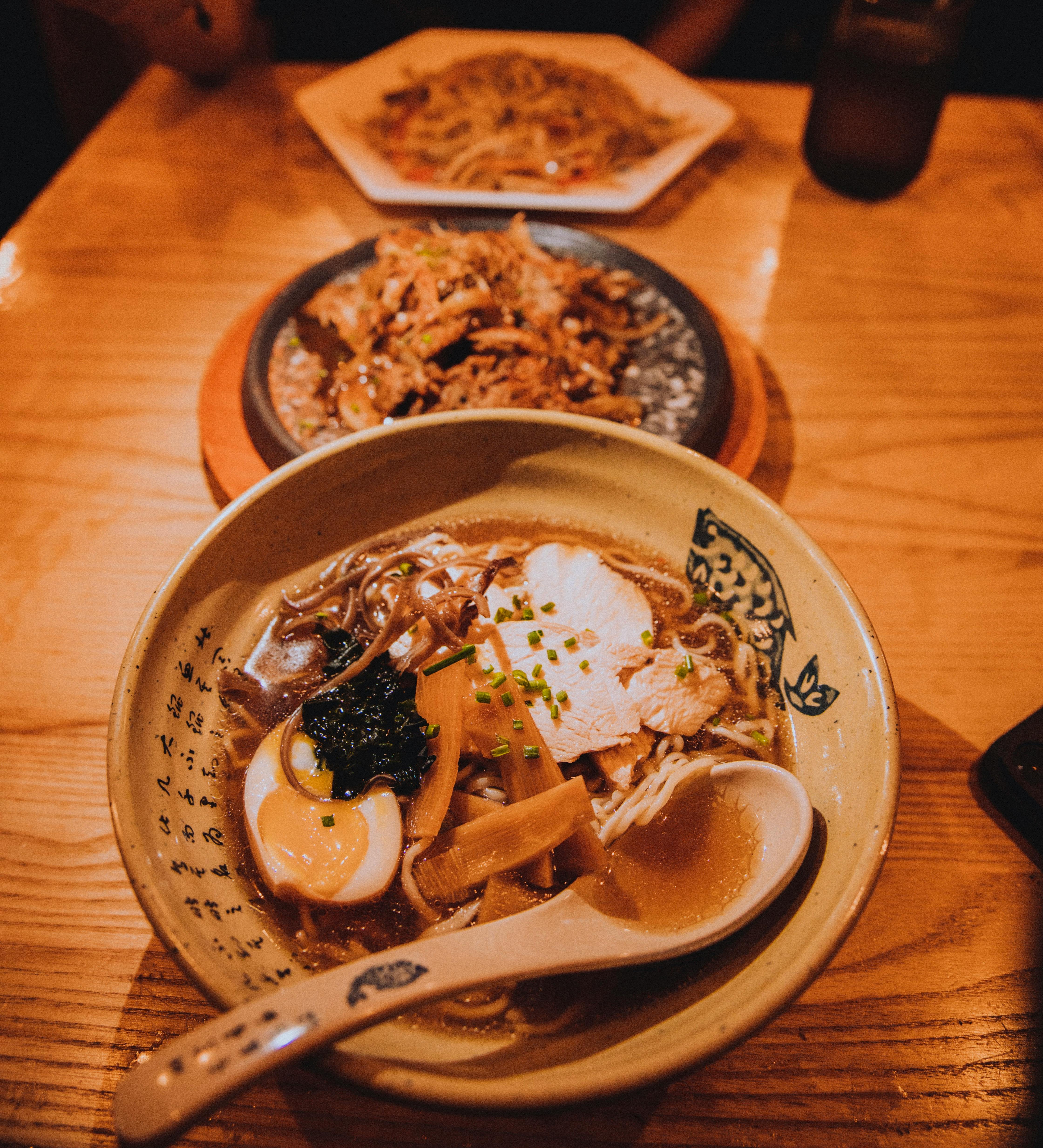In this article, you will be introduced to the world of Traditional Mexican Medicine. This ancient practice is deeply rooted in Mexican culture and history, offering a unique approach to healing and well-being. From herbal remedies to traditional healers known as curanderos, Traditional Mexican Medicine encompasses a rich tapestry of techniques passed down through generations. Discover the fascinating world of this holistic and ancient healing system, as we explore its principles, practices, and its enduring impact on Mexican society.
History of Traditional Mexican Medicine
Pre-Hispanic Era
The history of traditional Mexican medicine dates back to the Pre-Hispanic era, before the arrival of Spanish colonizers. During this time, indigenous cultures in Mexico, such as the Aztecs and Mayans, developed a deep understanding of the healing properties of various plants and natural remedies. These early healing practices were rooted in a holistic approach to health, focusing on both physical and spiritual well-being.
Spanish Colonial Era
With the arrival of the Spanish in the 16th century, traditional Mexican medicine faced significant challenges. The Spanish colonial rule brought with it the imposition of European medical practices and the suppression of indigenous healing traditions. However, despite the efforts to eradicate traditional medicine, many indigenous healers continued to practice in secrecy, preserving their ancestral knowledge and passing it down to future generations.
Modern Era
In the modern era, traditional Mexican medicine has seen a resurgence and a renewed appreciation for its healing practices. This revival has been driven by a growing recognition of the limitations of Western medicine, as well as a renewed interest in cultural heritage and indigenous wisdom. Today, traditional Mexican medicine coexists alongside modern healthcare systems, offering an alternative approach to healing rooted in centuries of ancestral knowledge.
Traditional Healing Practices
Herbal Medicine
One of the cornerstones of traditional Mexican medicine is herbal medicine. The use of plants and herbs for medicinal purposes has been a fundamental practice in Mexican healing for centuries. Traditional healers, known as curanderos or curanderas, possess a vast knowledge of local flora and their therapeutic properties. From traditional remedies for colds and stomach ailments to more complex treatments for chronic conditions, herbal medicine plays a central role in traditional Mexican healing.
Curanderismo
Curanderismo is a traditional healing practice that combines elements of herbal medicine, spiritual healing, and folk remedies. Curanderos and curanderas, who are highly respected members of their communities, use a variety of techniques to address physical, emotional, and spiritual ailments. These techniques may include energy healing, massage, incantations, and the use of sacred objects. Curanderismo emphasizes the interconnection between the body, mind, and spirit, and seeks to restore balance and harmony to promote healing.
Sobadores
Sobadores, or traditional bone-setters, are another vital component of traditional Mexican medicine. Using manual manipulation techniques, sobadores help restore proper alignment and functioning of the musculoskeletal system. They use their hands to massage, stretch, and adjust the body, often incorporating the use of oils or medicinal herbs. Sobadores are highly valued for their ability to alleviate pain, treat muscle injuries, and improve overall body function.
Hueseros
Similar to sobadores, hueseros are traditional bone healers who specialize in addressing bone-related ailments and injuries. Hueseros use a combination of manual manipulation and indigenous healing techniques to treat fractures, dislocations, and other bone-related issues. They believe in the interconnectedness of the body and see bone healing as a holistic process that involves not just the physical bone but also the energetic and spiritual aspects of the individual.
Parteras
Parteras, or traditional midwives, have played a crucial role in childbirth and women’s health throughout Mexican history. These highly skilled women provide care and support during pregnancy, labor, and the postpartum period. Parteras have inherited generations of knowledge and wisdom surrounding childbirth, using traditional techniques such as herbal remedies, massages, and spiritual rituals. Their role extends beyond the physical act of childbirth, as they also provide emotional and spiritual guidance to expectant mothers.

Holistic Approach to Health
Balance and Harmony
Traditional Mexican medicine takes a holistic approach to health, emphasizing the importance of balance and harmony. It recognizes that physical, emotional, and spiritual well-being are interconnected and that imbalances in one aspect can affect the others. Traditional healers strive to restore balance and harmony through various techniques, including herbal medicine, energy healing, and spiritual rituals.
Energy Flow
Central to traditional Mexican medicine is the belief in the flow of energy throughout the body. It is believed that blockages or disturbances of this energy can lead to illness or disease. Traditional healing practices, such as curanderismo, sobadores, and hueseros, aim to restore the natural flow of energy and remove any obstructions that may be causing physical or emotional imbalances. By addressing the energetic aspects of health, traditional Mexican medicine seeks to promote overall well-being and vitality.
Spiritual Well-being
Traditional Mexican medicine recognizes the importance of spiritual well-being in maintaining good health. It views illness as an indication of spiritual disharmony and seeks to address the root causes through spiritual rituals and ceremonies. Traditional healers often incorporate prayers, incantations, and sacred objects into their healing practices to cleanse the spirit and restore spiritual well-being. The integration of spiritual elements with physical healing techniques is a key aspect of traditional Mexican medicine.
Key Beliefs and Concepts
Interconnectedness of Body, Mind, and Spirit
A fundamental belief in traditional Mexican medicine is the interconnectedness of the body, mind, and spirit. It is understood that these aspects are inseparable and must be addressed as a whole when seeking healing and wellness. Traditional healers approach health and illness from a holistic perspective, recognizing that physical ailments often have underlying emotional or spiritual causes. By addressing all aspects of the individual, traditional Mexican medicine seeks to achieve comprehensive healing.
Healing Through Rituals and Ceremonies
Traditional Mexican medicine places great importance on rituals and ceremonies as a means of healing. These rituals often involve the use of herbs, sacred objects, and incantations to create a sacred space and invoke spiritual forces. Whether it is a cleansing ritual to remove negative energy or a ceremonial offering to honor ancestral spirits, these rituals play a vital role in restoring balance and promoting healing. Traditional healers serve as guides and facilitators of these rituals, harnessing their knowledge and connection with the spiritual realm to aid in the healing process.
Cultural Significance of Illness
In traditional Mexican medicine, illness is seen as more than just a physical manifestation. It is also viewed within the context of cultural and societal beliefs. Traditional healers recognize the cultural significance of illness and understand that it can be influenced by factors such as family dynamics, community relationships, and societal pressures. This awareness allows healers to provide holistic care that not only addresses the physical symptoms but also considers the broader cultural and social aspects that may be contributing to the illness.

Herbal Medicine in Mexican Healing
Plants and Their Medicinal Uses
Herbal medicine has long been an integral part of traditional Mexican healing. The rich biodiversity of Mexico provides an abundance of medicinal plants with a wide range of therapeutic properties. Traditional healers have deep knowledge of these plants and their uses, passed down through generations. From common herbs like mint and chamomile for digestive issues, to more potent plants like guava leaves for wound healing, traditional Mexican herbal medicine offers a wealth of remedies for various ailments.
Principles of Herbal Medicine
Traditional Mexican herbal medicine operates on several guiding principles. One such principle is the belief that plants have inherent healing properties and an intelligence of their own. Traditional healers aim to harness the power of these plants to support the body’s own healing mechanisms. Another principle is the importance of the correct preparation and dosage of herbal remedies. Traditional healers carefully select, harvest, and prepare plants, often using specific techniques to extract their medicinal compounds. The proper administration and dosage of herbal remedies are crucial for their effectiveness and safety.
Curanderismo: Mexican Traditional Healing
Role and Training of a Curandero
Curanderos and curanderas are revered figures in traditional Mexican healing. Their role is multifaceted, encompassing aspects of spirituality, herbal medicine, energy healing, and folk remedies. Becoming a curandero requires years of training and apprenticeship under an experienced healer. The training involves learning about the properties and uses of medicinal plants, developing intuitive and energetic healing abilities, and acquiring knowledge of rituals and ceremonies. The path to becoming a curandero is a lifelong commitment to serving and healing the community.
Healing Techniques and Remedies
Curanderismo encompasses a wide range of healing techniques and remedies. These may include spiritual cleansings, the use of sacred objects, energy healing through laying of hands, and the administration of herbal remedies. Curanderos are skilled in diagnosing the root causes of illnesses, whether they are physical, emotional, or spiritual in nature. They often prescribe personalized treatments that combine different modalities to address the specific needs of each individual. The healing process is guided by the principles of balance, harmony, and the restoration of spiritual well-being.

Sobadores: Traditional Bone-Setters
Techniques and Tools
Sobadores have specialized knowledge in bone-setting and musculoskeletal health. Using their hands as their primary tools, sobadores employ a combination of massage, stretching, and manipulation techniques to realign the bones, relieve joint pain, and improve mobility. They may also use oils, liniments, or herbal compresses to promote healing and reduce inflammation. The specific techniques employed by sobadores vary, often depending on the region and lineage they come from. Sobadores rely on their intuition and experience to assess the condition of the bones and develop an appropriate treatment plan.
Importance of Sobadores in Mexican Culture
Sobadores hold a significant place in Mexican culture and are highly respected for their skill and knowledge. They play a crucial role in the community by offering affordable and accessible care for musculoskeletal ailments. Many people seek the assistance of sobadores before turning to modern medical interventions, valuing the holistic and hands-on approach that sobadores provide. Additionally, sobadores serve as custodians of cultural traditions, passing down their techniques and knowledge to future generations.
Hueseros: Traditional Bone-Healers
Techniques and Traditional Approaches
Hueseros specialize in bone healing and treat a range of bone-related conditions. They rely on manual manipulation techniques to restore proper alignment and functioning of bones and joints. Traditional approaches may involve gentle stretching, massages, or applying pressure to specific areas to alleviate pain and promote healing. Hueseros often have a deep understanding of the energetic and spiritual aspects of bone health, integrating these elements into their treatments. They may also prescribe herbal remedies or suggest changes in diet and lifestyle to support the healing process.
Popular Remedies and Treatment
Hueseros employ a variety of traditional remedies to complement their bone-healing techniques. These may include the application of herbal poultices or compresses to reduce inflammation and promote circulation. They may also recommend the use of traditional bone-setting remedies, such as special oils or liniments, to aid in the healing process. Hueseros emphasize the importance of holistic care, addressing not just the physical aspects of bone health, but also the emotional and spiritual components for comprehensive healing.
Parteras: Traditional Midwives
Role and Importance of Parteras
Parteras have been an integral part of Mexican culture for centuries, providing care and support during pregnancy, labor, and postpartum. They possess a wealth of knowledge on traditional birthing practices and offer a holistic approach to childbirth. Parteras support women through every stage of the birthing process, providing emotional, physical, and spiritual guidance. Their presence ensures cultural continuity, as they play a vital role in preserving traditional practices and promoting a positive birth experience for mothers and infants.
Traditional Birthing Practices
Traditional birthing practices encompass a range of rituals and techniques employed by parteras. These may include the use of herbs and teas to support a healthy pregnancy, massage and positioning techniques during labor to ease pain and facilitate progress, and postpartum care to promote healing and bonding. Parteras often incorporate spiritual rituals and ceremonies into the birthing process, such as blessings or offerings to protect the mother and child. These practices not only address the physical aspects of childbirth but also honor the sacred and transformative nature of the birthing experience.
Integration with Modern Medicine
Contemporary Challenges
Traditional Mexican medicine faces various challenges in the modern era. One of the main challenges is the loss of traditional knowledge and practices due to the influence of Western medicine and cultural shifts. Additionally, access to traditional healers and resources may be limited in certain regions, leading to a decline in the availability of traditional healing services. Economic pressures and the increasing popularity of Western medicine also pose challenges to the sustainability and recognition of traditional Mexican healing practices.
Collaborative Efforts
There is a growing recognition of the value and importance of traditional Mexican medicine in the broader healthcare system. Efforts are being made to foster collaboration between traditional healers and conventional healthcare providers. This collaboration aims to integrate the strengths of both systems, offering patients a more holistic and culturally sensitive approach to healthcare. By working together, traditional healers and modern healthcare professionals can share knowledge, resources, and expertise to improve patient outcomes and promote overall well-being.
Recognition by the Mexican Government
In recent years, the Mexican government has taken steps to recognize and support traditional Mexican medicine. It has implemented policies and programs aimed at preserving and promoting traditional healing practices, including the establishment of traditional medicine clinics and the inclusion of traditional healers in the public healthcare system. This recognition not only elevates the status of traditional healers but also ensures that traditional Mexican medicine continues to be a valued and accessible healthcare option for the Mexican population.
In conclusion, traditional Mexican medicine has a rich and diverse history rooted in the ancient wisdom of indigenous cultures. It offers a holistic approach to health and healing, focusing on the interconnection of the body, mind, and spirit. Through practices such as herbal medicine, curanderismo, sobadores, hueseros, and parteras, traditional Mexican healers provide a comprehensive and culturally significant approach to healthcare. As the importance of cultural heritage and ancestral wisdom is increasingly recognized, traditional Mexican medicine continues to thrive and contribute to the well-being of individuals and communities.
